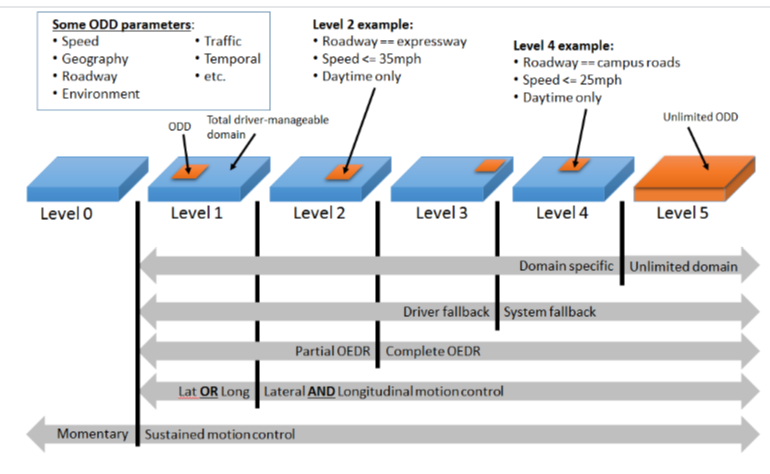Each fortnight of Semester 2 of the 3A Institute Master of Applied Cybernetics, we are exploring a component of the 3As (Autonomy, Assurance, Agency) and 3Is (Intent, Interface and Indicators) framework. Find out more about the emerging 3AI framework here and an excerpt on Autonomy below.

Below is a short examination of the use of the words ‘autonomy’, ‘autonomous’ and ‘automated’ as illuminated through our readings for the fortnight.
‘Autonomy’, ‘autonomous’ and ‘automated’ are terms often used interchangeably. Their meanings, however, are not the same, nor are they obvious or easy to define, particularly when applied to cyber-physical systems. As Marvin Minsky (2008) would suggest, “strict definitions can make things worse, until we’re sure that our ideas are right”. To combat this challenge of ‘suitcase words’, Minsky suggests examining ways in which the word is used in different contexts — this approach is taken through two lenses below.
Connection to humans
There appears to be an aversion to applying the word ‘automated’ to describe a human directly. Noble (1984)’s work is labelled ‘A social history of Industry Automation’ for example, and he describes the ‘primitive enchantment with automation’ as ‘fantasies with automatic factories’, ‘automating manufacturing processes’, ‘automatic industrial control’ (italics added). Humans are interacting with these automated systems and processes, but humans themselves are not described as automated.
Similarly, Taylor (1911) goes to considerable lengths to refute the idea that humans become merely ‘automaton’ (this term has the same etymology from the Greek ‘automatos’ as ‘automated’), comparing the standardisation and training associated with his scientific management approach to surgeons and still requiring human ingenuity.
Further, SAE International (2018) frames their report as the relationship between ‘automated features’ and the role of the human driver, indicating the separateness of the human to ‘automation’. They also make explicit the use of the word ‘automated’ as more appropriate than ‘autonomous’ when describing their driving systems. They make a distinction linked to source of feedback: if feedback is coming from within the system, then perhaps it is ‘autonomous’, but if it relies on ‘outside’ information, then it is ‘cooperative’ and ‘automated’.
Scope, degrees, states
The scope of applicability of the word ‘automated’ appears to be more contained compared to the application of the word ‘autonomous’ — automated is ring-bound in features (SAE 2018) and processes (Taylor, 1911; Noble 1984), whereas autonomy is applied to more vast and complex concepts, such as to people (in the case of the Uluru statement, 2017- implicitly through calls for recognition of ‘ancient sovereignty’) or to infrastructure (Nadege et al , 2018).
Another distinction appears to be in whether the terms are associated with degrees or states. For SAE International (2018), degrees (Levels 1–5 see Figure 1) of automation are discussed, however for Nadege et al (2018), an autonomous infrastructure is described as a state where there is a “collective adhocratic ongoing processes of mutation”. It appears autonomy and autonomous are discussed in states not degrees and their scope of application is more far-ranging compared to the term automated.

From this we could glean that automation is described in containers of degrees and scope whereas autonomy is connected to a state of being and more vast concepts. Further, humans are unlikely to be described as ‘automated’ and cyber-physical systems are unlikely to be truly autonomous. Does that make the terms ‘autonomous’ and ‘autonomy’ purely applicable to realm of humans? Arguably, humans also have feedback loops external to their own systems, which calls into question whether humans are truly autonomous either!
There are no straight-forward answers, however lots of questions emerge when considering automation and autonomy in the context of cyber-physical systems.
References:
Minsky, M. (2008). The Emotion Machine (2008), Chapter 4.
Nadege, Kefir Collective (2017) ‘De Zombies a Ninjas: Infraestructura Autonoma Feminista’, (English version)
Noble, D. (1984). Forces of Production: a social history of industrial automation, Chapter 4, pp. 57–76
Taylor, F. W. (1911). Principles of Scientific Management. Chapter 1, pp. 3–13.
Uluru Statement from the Heart (2017). First Nations Convention
US Society of Automotive Engineers (SAE) (2018). Standard J3016_201806: ‘Taxonomy and Definitions for Terms Related to Driving Automation Systems for On Road Vehicles